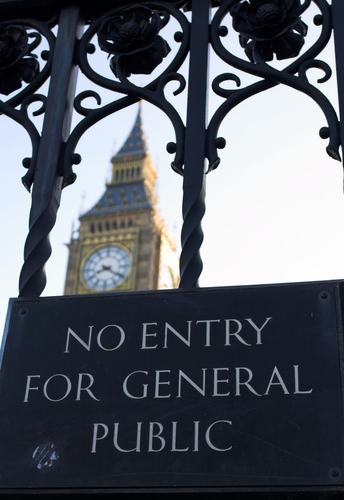 I was about to start a deposition at Stained Glass Factory located somewhere between Syracuse and Utica. The owner of the factory decided he wanted to sit in on the deposition of one of his employees. As a new associate, my knee-jerk response was to exclude the owner since he may influence the employee’s answers to my questions. I quickly decided that the owner could attend the deposition since his company was a party in the case. I created a record and explained that the witness’s boss was present in the room and asked whether the employee was concerned about her job. My instinct that the owner could be present was right, but for the wrong reason.
I was about to start a deposition at Stained Glass Factory located somewhere between Syracuse and Utica. The owner of the factory decided he wanted to sit in on the deposition of one of his employees. As a new associate, my knee-jerk response was to exclude the owner since he may influence the employee’s answers to my questions. I quickly decided that the owner could attend the deposition since his company was a party in the case. I created a record and explained that the witness’s boss was present in the room and asked whether the employee was concerned about her job. My instinct that the owner could be present was right, but for the wrong reason.
There is no Federal Rule of Civil Procedure that excludes non-parties from attending a deposition. While we typically think of depositions as being private proceedings, a deposition can be very public.
A deposition audience can be used as an advocate’s sword. For example, counsel could invite media reporters, aggrieved family members, or former colleagues to influence and pressure a deposition witness. Imagine that you are defending the deposition of the former CEO of a bankrupt company and it is standing room only for ex-employees that have lost their jobs and pensions. Or perhaps, the parents and siblings are sitting across the table in your deposition which involves the death of their relative in a car accident. There is nothing legally inappropriate or unfair about these audiences being at the deposition.
A protective order is the advocate’s shield. Rule 26(c)(1)(E) allows you to seek a protective order “designating the persons who may be present while the discovery is conducted.” In addition, holding the deposition in your offices will allow you to control access to the deposition. Another potential remedy for your client is to enter into a confidentiality stipulation and agreement at the onset of discovery.
What should you do when you enter a conference room and see the angry mo
 While Sidney Poitier, Spencer Tracy and Katherine Hepburn may not be a party to my case, they could be coming to the deposition.
While Sidney Poitier, Spencer Tracy and Katherine Hepburn may not be a party to my case, they could be coming to the deposition.

